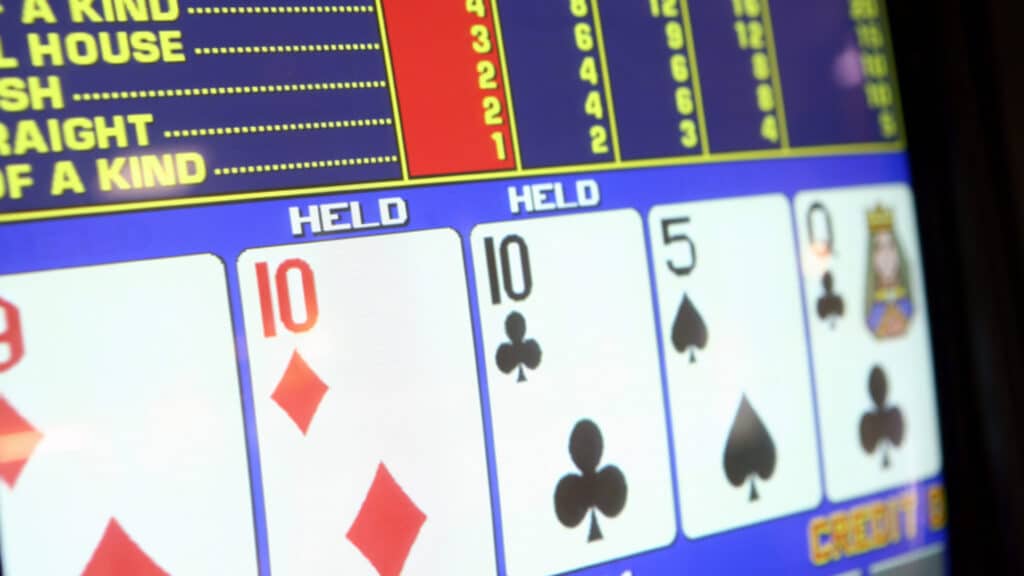Online video poker tournaments offer an exciting opportunity to compete against other players, test your skills, and win big. Whether you're a seasoned player or just starting out, mastering the strategies required for success in these tournaments can significantly improve your chances of coming out on top. In this guide, we will explore everything you need to know about crushing online video poker tournaments, including essential strategies, tips, common mistakes to avoid, and ways to maximize your winnings.
What Are Online Video Poker Tournaments?
Online video poker tournaments are competitive events where players face off against one another to achieve the highest payout based on a series of hands. Unlike traditional video poker, where players play against a machine, tournament participants compete against other players. The goal is to accumulate the highest total score over a set number of rounds or hands.
How Do Online Video Poker Tournaments Work?
In a typical online video poker tournament, players receive a set amount of credits or chips at the start of the game. They then play a specific number of hands, with each hand contributing to their total score. The player who accumulates the most points by the end of the tournament wins a prize, which can range from cash to exclusive bonuses, depending on the casino hosting the event.
Scoring is generally based on the payout schedule of the video poker game being played. For example, a royal flush may earn the highest points, while a pair of jacks or better may earn fewer points. Some tournaments may also have bonuses or multipliers that can increase the amount of points earned during a hand.
Strategies for Crushing Online Video Poker Tournaments
To succeed in online video poker tournaments, you need to combine sound strategies with a good understanding of the game mechanics. Below are key strategies to help you crush your next tournament.
1. Understand the Game Variants
Different video poker games have different payout structures and rules. While the basic principles are the same across most variants, there are subtle differences that can affect your strategy. Some of the most popular video poker variants include:
- Jacks or Better: The most common variant where you need a pair of jacks or higher to win.
- Deuces Wild: A variant where twos (deuces) act as wild cards, giving you more chances to form winning hands.
- Joker Poker: Similar to Jacks or Better but with a joker card, which acts as a wild card in the deck.
- Bonus Poker: A variant that offers a higher payout for certain hands like four-of-a-kinds.
Each game has different payout schedules, so it’s crucial to understand how hands are scored in the specific tournament you’re participating in. Study the paytable carefully to maximize your understanding of which hands will earn you the most points and how to achieve them.
2. Perfect Your Basic Video Poker Strategy
One of the most important aspects of succeeding in video poker tournaments is mastering the basic strategy for the variant you're playing. This involves knowing which cards to hold and which to discard in order to maximize your chances of forming a winning hand. Here are some general tips for basic strategy:
- Always hold a pair of jacks or better: In games like Jacks or Better, this is your baseline hand for success.
- Hold all four-of-a-kinds: If you are dealt four matching cards, hold them and discard the fifth card to go for a five-of-a-kind.
- Keep wild cards: In games like Deuces Wild or Joker Poker, always hold on to any wild cards to improve your hand.
- Draw for straight or flush possibilities: If you have four cards to a straight or flush, keep them and draw for the fifth card.
Mastering these basic strategies and applying them consistently is crucial to your success in any online video poker tournament. If you’re serious about improving, consider practicing these strategies using free video poker games before entering real-money tournaments.
3. Manage Your Bankroll Wisely
Effective bankroll management is critical in video poker tournaments. While tournaments are typically low-stakes compared to regular video poker games, managing your bankroll properly can help you stay in the game longer and increase your chances of winning. Here are some tips for managing your bankroll in online video poker tournaments:
- Set a Budget: Decide how much you're willing to spend on tournament entry fees and stick to it. If you're playing multiple tournaments, ensure you allocate your bankroll in a way that allows for consistent play.
- Limit Your Bets: Many video poker tournaments will allow you to bet at different levels. If you're a beginner, start with smaller bets and gradually increase your stake as you become more comfortable with the tournament format.
- Avoid Chasing Losses: If you’re having a rough start, don’t increase your bet size in an attempt to recoup losses. Stick to your strategy and focus on making the best decisions possible.
4. Take Advantage of Tournament Bonuses and Promotions
Many online casinos offer special bonuses or promotions for video poker tournaments. These might include tournament entry bonuses, cashback deals, or loyalty points that can help boost your winnings. Always take advantage of these offers to increase your edge in the tournament. Be sure to check the terms and conditions of each promotion to understand how to qualify and make the most out of them.
5. Practice, Practice, Practice
Like any form of poker, video poker is a skill-based game, and the more you practice, the better your chances of succeeding in a tournament. Fortunately, there are many free video poker games available online, allowing you to hone your skills without risking real money. By practicing different variants, learning new strategies, and getting comfortable with tournament mechanics, you’ll be better prepared when it’s time to enter a real-money event.
Advanced Strategies for Experienced Players
If you’ve already mastered the basics, you can improve your performance further by incorporating advanced strategies into your tournament play. Here are some tips for more advanced players who want to step up their game and increase their chances of winning big:
1. Adjusting to Tournament Dynamics
Unlike regular video poker, tournament play introduces a new dynamic where your decisions affect not just your personal score but also your position relative to other players. As the tournament progresses, it’s essential to adjust your strategy based on how other players are performing. For example, if you're in the lead, you can afford to play more conservatively to protect your position. However, if you're trailing behind, you may need to take more risks to catch up.
2. Risk Management and Bet Sizing
In online video poker tournaments, how you manage your bets can have a significant impact on your overall performance. Advanced players know when to adjust their bet size depending on the situation. For example, if you're early in the tournament and have a large stack, you might want to take fewer risks and focus on maintaining your position. As the tournament nears its end and the field narrows, increasing your bet size on high-value hands can help you secure a higher position in the rankings.
3. Utilizing Timing and Speed
Some video poker tournaments are played under a time limit, adding an element of speed to the game. Advanced players often use this to their advantage by practicing quick decision-making and timing. You don’t want to rush, but being able to make optimal decisions under time pressure can give you an edge over slower players.
Common Mistakes to Avoid in Video Poker Tournaments
While mastering the strategies above will significantly improve your chances, it's also important to be aware of common mistakes that many players make in video poker tournaments. Here are some errors to watch out for:
1. Failing to Adjust Strategy for Tournament Play
One of the biggest mistakes new tournament players make is using a standard video poker strategy without adapting to the unique dynamics of tournament play. Always consider your tournament position and adjust your strategy based on your current standing.
2. Chasing Losses
It’s easy to get frustrated if you're not performing well, but chasing losses by increasing your bet size or playing recklessly is a surefire way to eliminate your bankroll. Stick to your strategy and manage your bets carefully.
3. Ignoring the Paytable
Failing to study the paytable of the specific video poker variant you're playing is a critical error. Each variant has different payouts, and you need to know the best hands to aim for to maximize your points.
Conclusion
Crushing online video poker tournaments takes a combination of skill, strategy, and proper bankroll management. By understanding the game variants, mastering basic strategies, practicing regularly, and adjusting to tournament dynamics, you’ll increase your chances of winning. For advanced players, fine-tuning your risk management and betting strategies will give you a competitive edge in these exciting events. With the right preparation, you can take your video poker tournament play to the next level and have fun while maximizing your potential for big wins.



